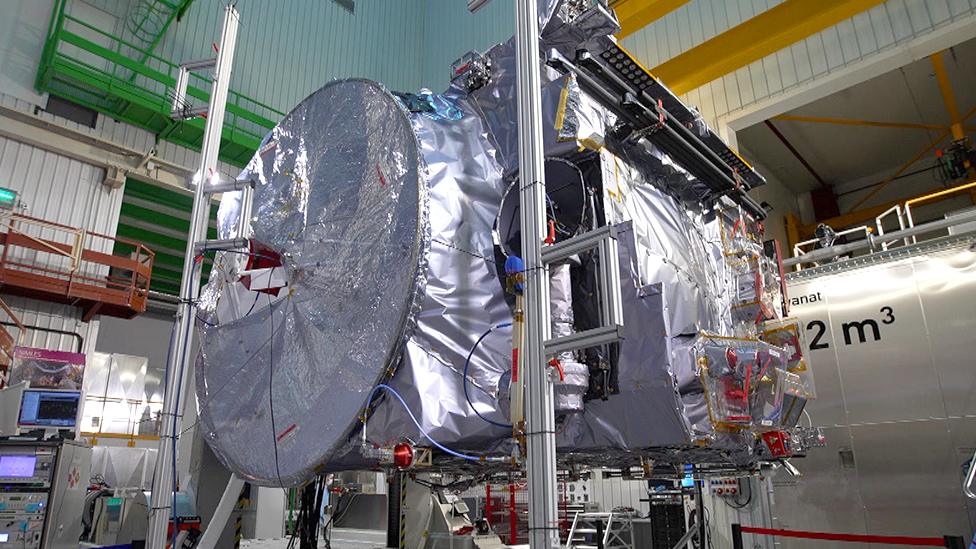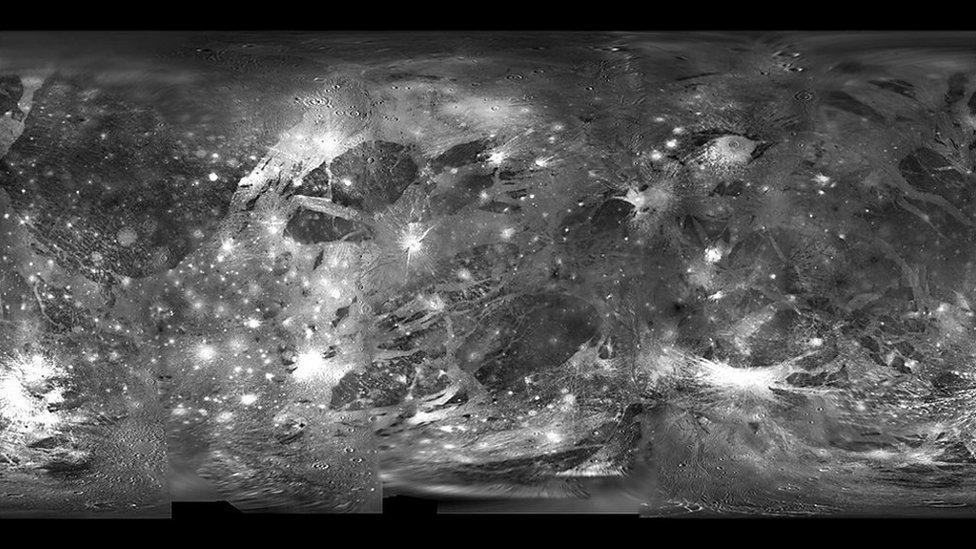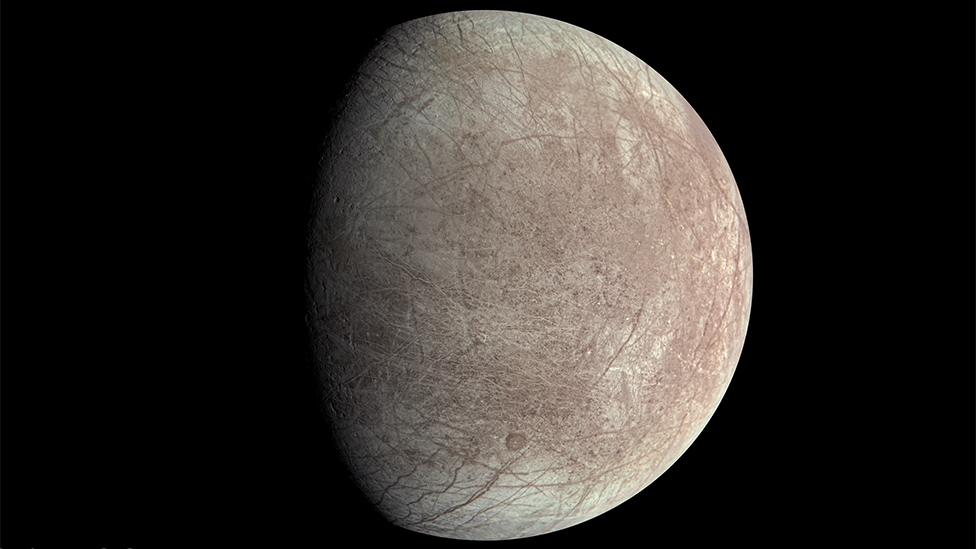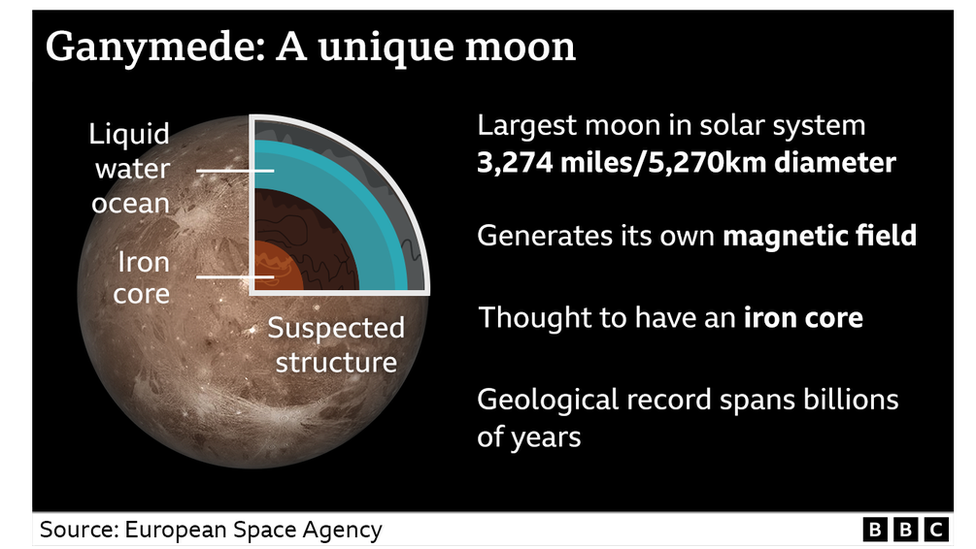Jupiter: Spacecraft to explore icy moons is ready for launch
- Published
- comments

Jupiter Icy Moons Explorer: The mission has been nearly twenty years in the planning
A space mission to the icy moons of Jupiter is making its final preparations ahead of its launch in April.
JUICE - which stands for JUpiter ICy Moons Explorer, is one of the most important space missions of 2023.
Its aim is to explore Jupiter's moons to see if any can be lived on by humans.
The European Space Agency (Esa) project team behind Juice held a major review this week and concluded the mission was "go for launch".
What is the Juice mission?

A map of Ganymede's icy surface. The crust caps a hidden ocean
Juice will take eight years to get to the giant planet Jupiter - where it will explore three of its moons.
The six-tonne spacecraft will make fly-bys, which means a close approach for observation without landing, of the moons Callisto, Ganymede and Europa.
It will then settle permanently around Ganymede in late 2034. The aim of the mission is to find out if any of the moons are habitable and can support life.
There are scientific instruments on board the spacecraft, including high-resolution cameras and telescopes which can take detailed pictures of the moons and radar to make 3D maps of the surfaces.
Are Jupiter's moons habitable?

The mission is trying to find out if humans could live on Jupiter's moons
This is what the mission is trying to find out, but there is enough information that they could be to make the trip worth it.
Jupiter is one of the outer planets of our solar system, far away from the Sun, and get just a small amount of the light that falls on Earth.
Despite this, Jupiter's moons are hotter than they should be at this distance from the Sun and scientists believe that this is because the gravitational pull from Jupiter on the moons results in a squeezing and pushing which heats them up.

This energy and warmth results in something else - water - and for scientists wherever there is water, there is an opening for life.
All the moons are believed to have vast underground oceans below their outer crusts.
